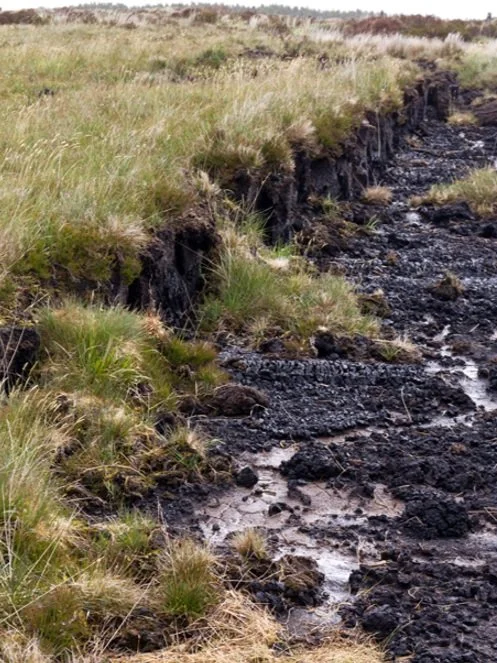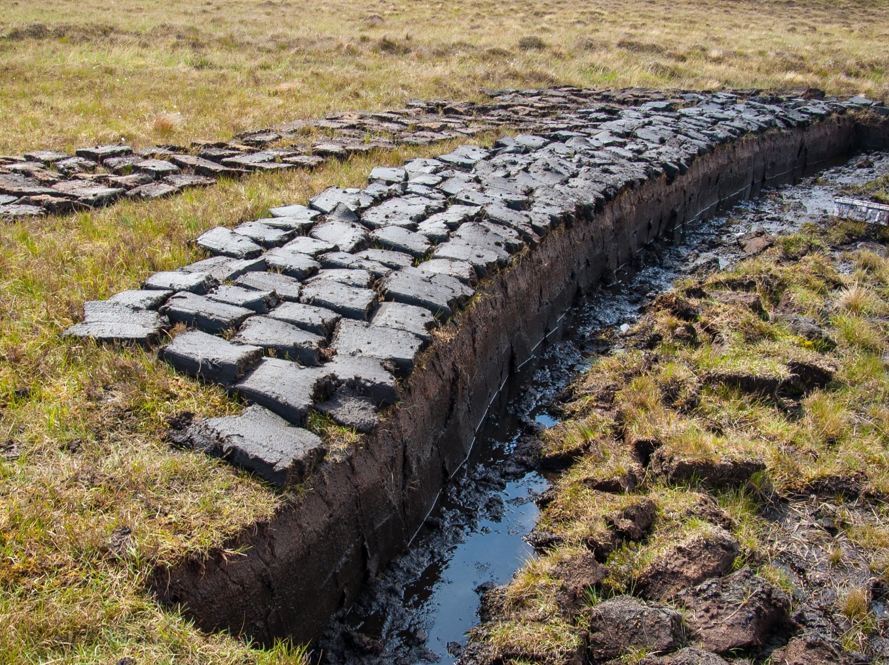‘The Fate of Archaeology is Tied to The Fate of Peatlands’ Says UCC Environmental Archaeologist Dr Benjamin Gearey
By Deputy News Editor Marc Galdes
Dr Benjamin Gearey
There has been a significant increase in interest in preserving Ireland’s peatlands in the last 20 years, however, damaging practices like peat cutting still seem to be taking place.
On 13 March The European Commission announced that it would refer Ireland to the European Courts of Justice (ECJ) for not complying with the habitats directive in regards to the protecttion of raised bogs and blanket bogs. The Commissioners report concluded that drainage and peat cutting were damaging Ireland’s bogs and not enough was being done by the government to stop this. Ireland has received millions of EU funds which have been used on projects to restore Irish peatlands, however, Ireland’s inability to put an end to peat cutting has left the European Commission with no other choice.
This infringement was flagged back in 2010, but the Irish government failed to crack down on peat cutting during this period. In 2022 Ireland was warned that that might be taken to the ECJ if peat cutting did not cease. In response, Agriculture Minister Charlie McConalogue, on RTÉ radio’s Morning Ireland, said that Ireland should take the conservation of bogs ‘massively seriously’.
Literature students might be aware of this landscape after studying Irish poet Seamus Heaney – the ubiquitous poet of the bog. The Glucksman held an exhibition from 1 December to 10 March called Radical Archaeologies: Unearthing Landscape in Contemporary Irish Art which showcased Irish art practices that are linked to Ireland’s peatlands.
The deterioration of peatlands does not only affect the environment, however. Environmental Archaeologist Dr Benjamin Gearey told the University Express that ‘the fate of archaeology is tied to the fate of peatlands’.
Irish peatland, from: iStock
Gearey is a lecturer in the Department of Archaeology at UCC and his research centres around wetland environments, specifically peatland environments. He explained that his interest in peatlands is tied to the preservation of archaeological material in peatlands.
In theory, he said, healthy peatlands should preserve archaeology that’s found in the bogs. Unfortunately, he added that due to peat cutting a huge amount of archaeological material has been destroyed in Ireland. Also true, is that a lot of famous archaeological finds from Irish peatlands, such as prehistoric human remains, were only discovered because of peat cutting. ‘So the agent of discovery is the agent of destruction as well. Otherwise, this material would be sat quietly in the undisturbed bogs.’
‘Quite a few of the rehabilitation and restoration programmes, until recently, were not really thinking about cultural heritage in that way. Following a lot of lobbying it has shifted around in the last few years.’
Peatlands Regarded as Not Useful
‘Around 20 per cent of Ireland’s land area is peatland of one form or another.’ Peatlands in Ireland, he added are roughly split down into two: the raised bogs in the midlands a large portion of which have been industrially drained with extraction for peat, and the blanket bogs of the West and to an extent the East of Ireland.
Peat is essentially ‘organic matter that hasn’t decayed properly. It forms in environments where you generally have waterlogging humid climates where you have a balance between precipitation and evaporation. Plants grow and when they die they don't decay fully and they deposit peat.’
Peatlands have degenerated a ‘huge amount’ over the years, Gearey said. ‘Wetlands in most of the world, particularly in Northern Europe, for a long while, were regarded as drab and dreary and not particularly useful.’
Gearey said that it was only in the 1980s in Ireland and in most of North West Europe that there was more recognition that draining peatlands and turning them over to farmland should stop as it was disturbing their functions.
However, when asked whether peatlands are successfully regenerating Gearey hesitantly responded: ‘Well, it’s kind of getting there.’ He noted how peatlands which have been damaged are now being rehabilitated and rewet to restore some of their function.
‘So for example, the midland communities, really since the 1940s, were reliant on peat extraction economically. At the end of peat cutting that economic support is removed for those communities.’
Although he said that ‘in many ways, we’re going in the right direction’ with the support of grassroots communities who have been really active in encouraging local engagement with peatland restoration and regeneration programs, he acknowledged that these issues are becoming ‘more and more urgent’.
Putting an end to peat cutting isn’t as simple as it seems considering the complex relationship between Irish culture and peat cutting, Gearey said. ‘So for example, the midland communities, really since the 1940s, were reliant on peat extraction economically. At the end of peat cutting that economic support is removed for those communities.’ For many people, peat cutting by hand is deeply engrained in their culture it could be seen as a ‘form of intangible cultural heritage’.
The Link Between Our Wellbeing and Healthy Peatlands
World Wetlands Day takes place on 2 February and this year the theme for this event was ‘Wetlands and Human Wellbeing’. Asked how wetlands are important for our well-being, Gearey referred to the term natural capital or what we might call eco-system services.
‘Natural capital is the functions that the environment provides for us humans which we don't tend to notice or value.’ To reap the benefits of this ecosystem, the peatlands’ hydrological processes must be respected. One benefit he pointed out is that peatlands’ ability to retain water reduces the chances of floods unless of course they are drained.
Peat cutting, from: Getty Images
Also, by not draining them, ‘they accumulate organic matter that locks up carbon’. Draining, burning or cutting them will release the carbon it has been storing into the atmosphere, ‘essentially contributing to global warming via the destruction of peatlands.’
Peatlands are not only directly impacted though, Gearey also said that peatlands have been indirectly affected by pollution and climate change.
‘All these functions come out of biodiversity. Healthy biodiverse systems do things for us as humans that for many years we didn't really value in the right way.’
Climate Change Causing Peatlands to Dry
Asked whether climate change is affecting peatlands, he said: ‘Climate change is impacting all eco-systems… Especially peatlands that are being drained or affected under various scenarios of global heating, that's just going to get worse. They're going to get drier and drier and they're going to release more CO2 into the atmosphere.’
‘In the climate crisis trying to separate different environments out of equations doesn't really work, it has to be part of bigger strategies and solutions.’ Gearey also mentioned how the Executive Director of the UN Environment Programme Achim Steiner famously called peatland restoration a ‘low-hanging fruit, and among the most cost-effective options for mitigating climate change’.
‘The restoration and rehabilitation side of things is complex,’
Gearey mentioned some interesting work being done by the Mathematics Department at UCC about what's called the compost bomb scenario. ‘This suggests that under certain climate change scenarios if the temperature increases too quickly then you get this runaway process whereby bogs just start drying out really dramatically releasing CO2.’
That being said, Gearey explained that peatlands can also release methane (a potent greenhouse gas) on their own, which makes the process of rehabilitation complicated.
‘This is why we talk about net carbon balances. It’s as much about what is locked in as what is going out from farming. So it’s not a simple equation and this is why the restoration and rehabilitation side of things is complex when it comes to working out carbon balances.’




